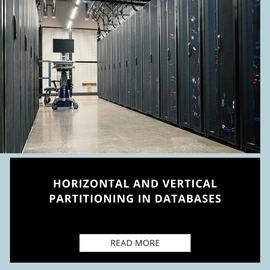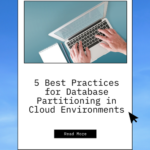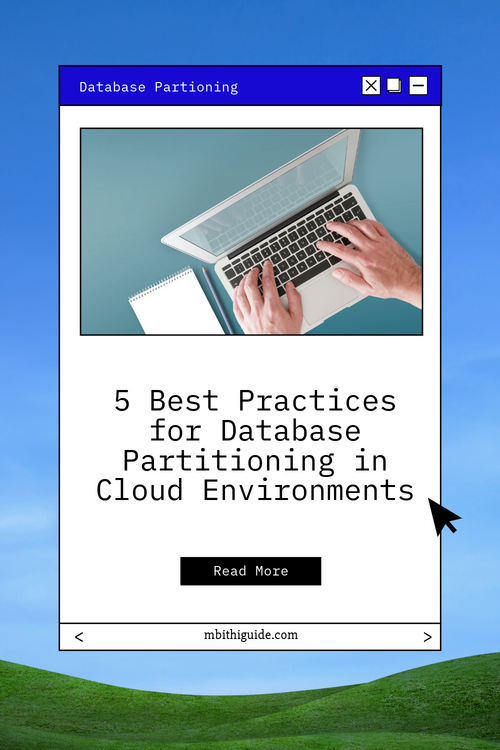Introduction
In the world of databases, efficient data management is crucial for performance and scalability. Horizontal and vertical partitioning are two techniques used to divide and store data in databases to improve performance and manageability.
We’ll explore what horizontal and vertical partitioning are, their benefits, and how they are implemented.
Role of Partitioning
Partitioning plays a crucial role in databases by improving performance, scalability, and manageability. It allows for the division of large tables into smaller, more manageable parts called partitions.
Each partition can be stored on different physical storage devices, enabling parallelism and reducing the I/O load on individual storage devices. This leads to faster query execution times, especially for queries that only need to access a subset of the data, as they can be directed to the relevant partition instead of scanning the entire table.
Additionally, partitioning enhances scalability by allowing databases to distribute data across multiple servers. As data volumes grow, new partitions can be added, and existing partitions can be split or merged to accommodate the increased load. This horizontal scalability enables databases to handle larger amounts of data and higher query loads without sacrificing performance.
Moreover, partitioning can improve manageability by making it easier to perform maintenance tasks, such as backup and restore operations, on smaller partitions instead of large, monolithic tables.
Horizontal Partitioning
Horizontal partitioning, also known as sharding, is a database design technique that involves dividing a large table into smaller, more manageable parts called partitions.
Each partition contains a subset of the rows from the original table, and these partitions are typically distributed across multiple physical storage devices or servers. The goal of horizontal partitioning is to improve performance and scalability by enabling parallelism and reducing the I/O load on individual storage devices.
Horizontal partitioning is often based on a partition key, which is a column in the table used to determine which partition a row belongs to. The partition key is chosen carefully to evenly distribute the data across partitions and to ensure that queries can be efficiently routed to the appropriate partition. Common partitioning strategies include range partitioning, where rows are partitioned based on a range of values in the partition key column, and hash partitioning, where a hash function is used to determine the partition for each row.
One of the key benefits of horizontal partitioning is improved performance. By dividing the data into smaller partitions, queries can be executed in parallel across multiple partitions, leading to faster query execution times. Horizontal partitioning also enhances scalability, as new partitions can be added as data grows, allowing the database to scale out horizontally by adding more servers. However, horizontal partitioning also introduces complexity, as managing and maintaining a large number of partitions can be challenging.
Vertical partitioning
Vertical partitioning is a database design technique that involves splitting a table into smaller tables, each containing a subset of the columns from the original table. Unlike horizontal partitioning, which divides data based on rows, vertical partitioning divides data based on columns.
The goal of vertical partitioning is to improve performance, reduce storage overhead, and simplify queries by grouping related columns together in separate tables.Vertical partitioning is often based on the logical relationships between columns. Columns that are frequently accessed together or are related in some way are grouped into the same vertical partition.
This allows queries that only require a subset of columns to access the relevant vertical partition, reducing the amount of data that needs to be scanned and improving query performance. Additionally, vertical partitioning can reduce storage requirements by eliminating redundant or infrequently used columns from the main table, leading to better storage efficiency.
One of the challenges of vertical partitioning is maintaining data integrity and ensuring that queries can still be efficiently executed across the partitioned tables. Normalization techniques can be used to ensure that data is properly distributed across vertical partitions while maintaining referential integrity. Query optimization is also important, as queries may need to access multiple vertical partitions to retrieve all the required data.
Key Differences
A comparison of horizontal and vertical partitioning:
| Aspect | Horizontal Partitioning | Vertical Partitioning |
|---|---|---|
| Basis of Division | Divides data based on rows (records). | Divides data based on columns (attributes). |
| Objective | Improve performance and scalability by distributing data. | Improve performance and storage efficiency by grouping columns. |
| Typical Use Cases | Large tables with millions of rows. | Tables with many columns, some of which are rarely accessed. |
| Key Concept | Partition key determines which rows go into which partition. | Columns are grouped together based on logical relationships. |
| Distribution | Rows are distributed across multiple partitions (shards). | Columns are distributed across multiple tables. |
| Query Performance | Can improve performance by enabling parallel query execution. | Can improve performance by reducing data scanned per query. |
| Scalability | Allows scaling out by adding more servers (horizontal scaling). | Improves storage efficiency, but scaling may be limited. |
| Maintenance | Easier to manage and maintain smaller partitions. | Requires careful normalization and query optimization. |
| Complexity | Managing many partitions can be complex. | Requires careful column selection and normalization. |
These differences highlight the distinct approaches and benefits of horizontal and vertical partitioning, with each technique offering advantages depending on the specific requirements and characteristics of the database.
Tools and Frameworks
For implementing horizontal and vertical partitioning in databases, various tools and frameworks can be used depending on the specific database system and requirements. For horizontal partitioning, database systems like MySQL, PostgreSQL, and Oracle provide built-in features for partitioning tables.
Frameworks such as Apache Cassandra and MongoDB are designed with horizontal scalability in mind and can be used for distributed data storage. For vertical partitioning, database schema design tools like MySQL Workbench, pgModeler, and dbdiagram.io can be helpful in visualizing and designing the partitioned tables. Additionally, ORMs (Object-Relational Mapping) like Hibernate, Entity Framework, and Sequelize can abstract the database design and handle the partitioning logic in the application code.






